Explanation of my 10 Ballon d'Or 1956
This is my ranking, my opinion on the Ballon d'Or of the year 1956. This ranking is based on the calendar year, not the season. What counts for this ranking is the player's regularity over the calendar year, the number of matches played, the ability to raise his level in big games, statistics (goals, assists, clean sheets, goals conceded, etc.) and trophies won (collective and individual).
#10 Eduard Streltsov
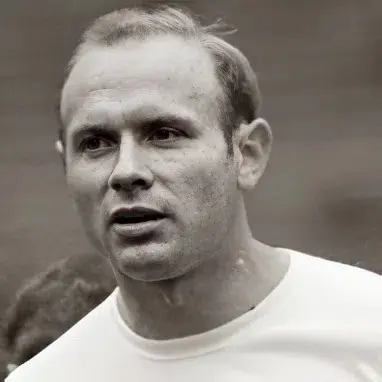
- Age : 18/19 years old
- Club : Torpedo Moscow
- Statistics : 34 games, 17 goals, / assists
- Trophies : Olympic Games, Spartakiad of The Peoples of the USSR
- Individual Awards : USSR League TOTY
In the calendar year 1956, Eduard Streltsov—known as “the Russian Pelé”—emerged as the youthful sensation who electrified Soviet football with both charisma and technical brilliance. At just 19 years old, he was already a force at Torpedo Moscow, helping the team win the Spartakiade of the Peoples of the USSR, a prestigious multi-sport competition among Soviet republics, and claim a bronze medal in the Soviet Top League. On the international stage, Streltsov made headlines at the 1956 Melbourne Olympics, where the USSR took gold, defeating Yugoslavia in the final. Though he didn't start the gold medal match due to tactical choices, his impact throughout the tournament was profound—his clever touches and physical dominance earned him the reputation of being one of the most complete forwards in Europe. Known for his wicked backheels, incisive passes, and uncanny ball control, Streltsov didn’t just play football—he reshaped the Soviet approach to attacking play. His popularity soared after dazzling displays for the national team, including a remarkable international debut in 1955 with three goals and three assists. By 1956, he was a household name across the USSR. At the 1956 Melbourne Olympic Games, Eduard Streltsov stood out as one of the brightest stars in the Soviet squad, even though he was only 19 years old. Already a sensation with Torpedo Moscow, he carried his flair and rebellious charisma onto the world stage with electrifying performances in the tournament.
#9 Julinho
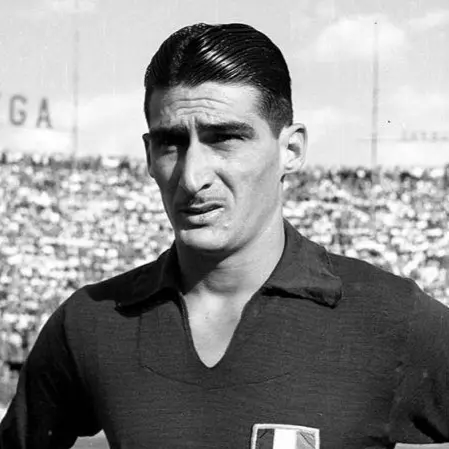
- Age : 26/27 years old
- Club : Fiorentina
- Statistics : 34 games , 7 goals, / assists
- Trophies : Serie A
- Individual Awards : Seria A POTY, Serie A TOTY
In the calendar year 1956, Julinho Botelho was already making waves in Italian football, just a year after arriving from Brazil’s Portuguesa. While Fiorentina fell short of the Scudetto that season, Julinho’s performances were foundational in crafting a squad that would become champions the following year. He played 31 Serie A matches, scoring 6 goals, and featured in almost every fixture, often as the linchpin of their right-wing assault. Julinho’s style stood out in Italy’s tactical league: he dribbled with grace, crossed with pinpoint precision, and possessed a cannon of a right foot that could break open the tightest defenses. His signature outside-of-the-boot delivery caused constant headaches for defenders, while his unpredictable movement turned the flank into a runway of possibilities. His creativity and offensive threat earned him a spot in the Serie A Team of the Year, underlining his impact among Europe's finest.
#8 Igor Netto
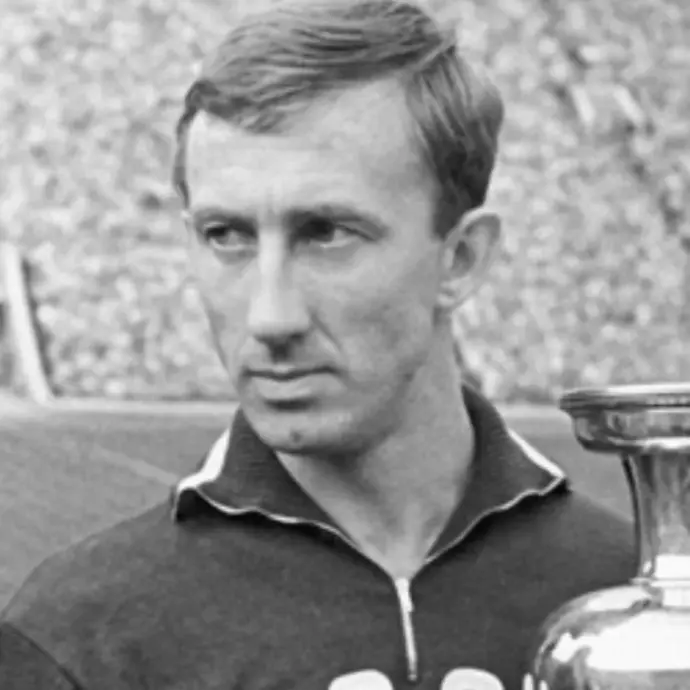
- Age : 26 years old
- Club : Spartak Moscow
- Statistics : 31 games, 5 goals, / assists
- Trophies : Olympic Games, USSR League
- Individual Awards : USSR League TOTY
In the calendar year 1956, Igor Netto—the Soviet captain with Estonian and Italian roots—stood as the embodiment of calm authority and technical finesse in a rapidly evolving footballing world. Wearing the armband for both Spartak Moscow and the USSR national team, Netto showcased a unique blend of tactical intelligence, versatility, and gentlemanly leadership that made him indispensable across defense and midfield. At club level, Netto led Spartak to the Soviet Top League championship, marking his third national title with the side. As a dynamic midfielder who had once started his career as a left-back, Netto’s ability to shuttle between positions gave Spartak a flexible spine. His precision passing and tireless movement helped unlock defenses, while his defensive instincts ensured solidity when the team was under pressure. On the international stage, 1956 was a golden year. Netto captained the USSR to Olympic glory in Melbourne, clinching the Gold Medal after a narrow 1–0 win over Yugoslavia in the final. Though not the tournament’s most flamboyant star, he was its moral compass and stabilizer, a leader who carried both responsibility and humility. His sportsmanship became legendary—never more evident than in later years when he convinced a referee to disallow a wrongly awarded goal against Uruguay.
#7 Lev Yashin
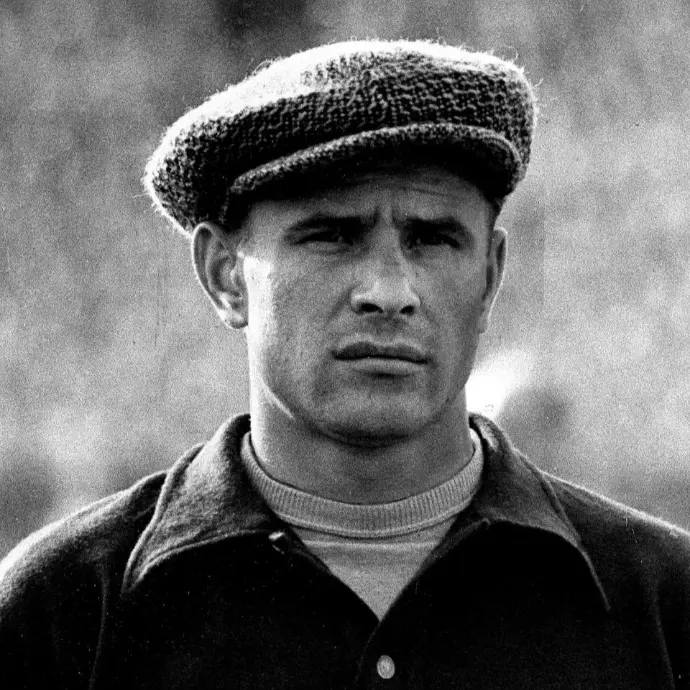
- Age : 26/27 years old
- Club : Dynamo Moscow
- Statistics : 23 games, 31 goals conceded, 7 clean sheets
- Trophies : Olympic Games, USSR League Vice-Champion
- Individual Awards : USSR League TOTY
In the calendar year 1956, Lev Yashin—“L'Araignée Noire” or “The Black Spider”—began weaving his legend into the fabric of global football. Towering at 1.89m and dressed in his iconic all-black kit, Yashin redefined goalkeeping with a style that was both fearsome and futuristic. At just 27 years old, he had become the last line of defense for Dynamo Moscow, helping them finish vice-champions of the Soviet Top League, conceding fewer goals than any other top-tier keeper in the USSR. What set Yashin apart in 1956 wasn’t just reflexes—it was his radical philosophy of the position. He became the pioneer of the “sweeper-keeper”, venturing off his line to intercept passes and launch counterattacks with laser-precise throws. His cat-like agility, iron fists, and commanding voice transformed goalkeeping from a reactive role into an orchestrating one. As he famously said: “Why wait passively on the goal line when your eyes see what others don’t?” The crowning moment of Yashin’s year came at the 1956 Olympic Games in Melbourne, where he conceded just two goals across four matches, leading the USSR to its first Olympic Gold in football with a 1–0 win over Yugoslavia in the final. The medal wasn’t just a symbol of Soviet dominance—it was a global debut for a keeper who would soon be hailed as the greatest of all time.
#6 Héctor Rial
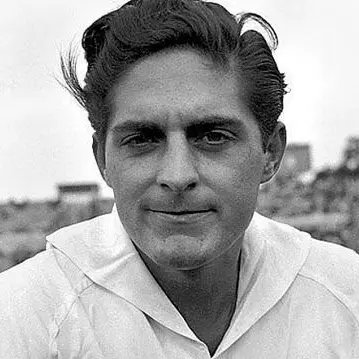
- Age : 27/28 years old
- Club : Real Madrid
- Statistics : 26 games, 17 goals, 12 assists
- Trophies : Champions League, Little World Cup of Clubs
- Individual Awards : Champions League TOTY
In the calendar year 1956, Héctor Rial—“El Tucuta”—emerged as Real Madrid’s silent conductor, orchestrating one of the most iconic victories in the club’s storied history. Having arrived from Nacional only two years earlier, Rial spent ’56 proving why his transfer was worth every ounce of the drama it took to make it happen. Though Madrid fell short in La Liga, finishing behind Athletic Club, it was on the European stage that Rial carved his legacy into football folklore. In the inaugural European Cup Final, held in Paris, Rial scored twice—including the decisive goal—in Real Madrid’s dramatic 4–3 comeback against Stade de Reims. His second strike, coolly taken in the 79th minute, crowned Madrid as continental champions and set the foundation for a decade of domination. Alongside Alfredo Di Stéfano, Rial’s movement, creativity, and clinical finishing offered the perfect complement to his more celebrated teammate’s dynamism.
#5 Stanley Matthews
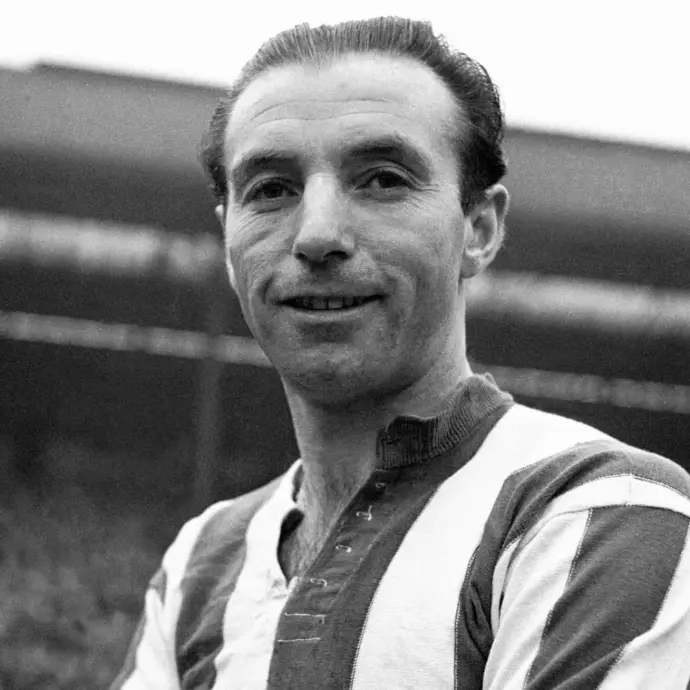
- Age : 40/41 years old
- Club : Blackpool FC
- Statistics : 39 games, 5 goals, 25 assists
- Trophies : Premier League Vice-Champion
- Individual Awards : Premier League TOTY
In the calendar year 1956, Sir Stanley Matthews—known as “The Wizard of the Dribble”—transcended generations and rewrote what longevity in football could look like. At 41 years old, while most players had long hung up their boots, Matthews was still slicing through defenders for Blackpool FC in England’s top flight, bringing grace, pace, and artistry to every touch on the right flank. His dribbling remained mesmerizing, his decision-making as sharp as ever, and his dedication to fitness—vegetarian diet, strict training, and Monday fasting—helped him defy time itself. In a side filled with emerging talent like Jackie Mudie and Jimmy Armfield, Matthews was still the beacon, the symbol of what football could be. On the international stage, Matthews dazzled once more in a landmark 4–2 win over Brazil at Wembley, where his performance left spectators in awe.
#4 Thadée Cisowski
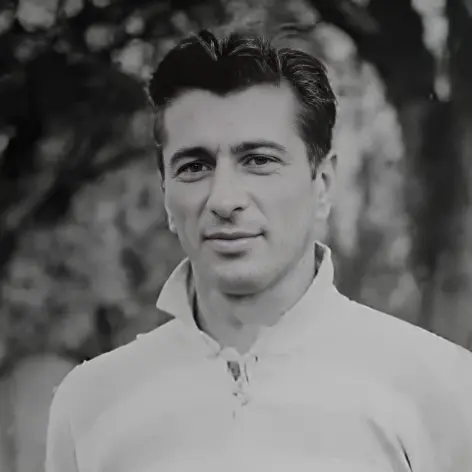
- Age : 28/29 years old
- Club : RC Paris
- Statistics : 35 games, 51 goals, 1 assist
- Trophies : /
- Individual Awards : French League POTY, French League TOTY, French League Golden Shoe (31 goals)
In the calendar year 1956, Thadée Cisowski—the “Roi sans couronne” of French football—was at the zenith of his goal-scoring powers, painting the French top flight with a striker’s elegance and a miner’s grit. The Racing Club de Paris forward, of Polish origin, combined raw finishing prowess with technical intelligence, leading Ligue 1 in goals with a phenomenal 31 strikes, earning him the title of top scorer for the first time. Cisowski’s form wasn’t just explosive—it was surgical. Whether burying tap-ins or launching thunderous drives from the edge of the box, he was a constant threat. Known for his 22 hat-tricks over his career—a French league record—1956 showcased not just his finishing, but his positioning, movement, and instinctive timing in front of goal. In a Racing side famed for its attractive style but denied silverware, Cisowski was its heartbeat, consistently rescuing matches with moments of solo brilliance. On the international stage, he matched his club form with jaw-dropping impact. On November 11, 1956, Cisowski etched his name into French footballing lore by scoring five goals against Belgium, a feat shared only with Eugène Maës in national team history. It was a performance that sent shockwaves through Europe and elevated him to legendary status among Les Bleus faithful.
#3 Juan Alberto Schiaffino
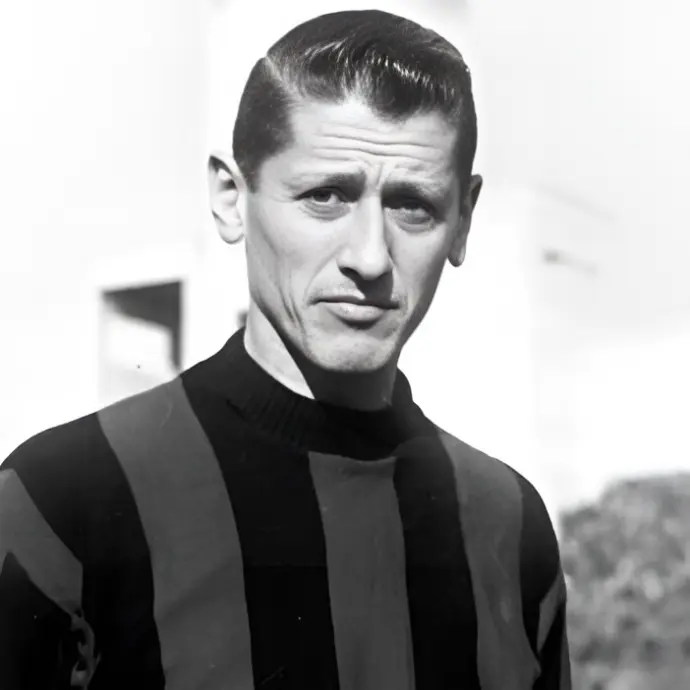
- Age : 30/31 years old
- Club : Milan AC
- Statistics : 34 games, 20 goals, / assists
- Trophies : Latin Cup, Serie A Vice-Champion
- Individual Awards : Serie A TOTY
In the calendar year 1956, Juan Alberto Schiaffino—known as “El Dios del Fútbol”—was the cerebral architect behind AC Milan’s return to glory, blending South American artistry with European tactical nuance. Already a legend for his role in the Maracanazo and his dominance at Peñarol, Schiaffino had become the brain of Milan’s midfield—effortlessly conducting attacks, dictating tempo, and outwitting defenders with breathtaking ease. That year, Milan clinched the Latin Cup, with Schiaffino emerging as the tournament’s top scorer, netting 3 goals in 3 matches. In domestic play, the Rossoneri finished as Serie A runners-up, narrowly missing the Scudetto, but Schiaffino’s vision, passing range, and spatial mastery stood out. He was often deployed as an attacking midfielder, but his versatility allowed him to drop deeper or float wide—earning admiration from teammates like Gunnar Nordahl and Nils Liedholm, who referred to him as “a coach on the pitch.”
#2 Raymond Kopa
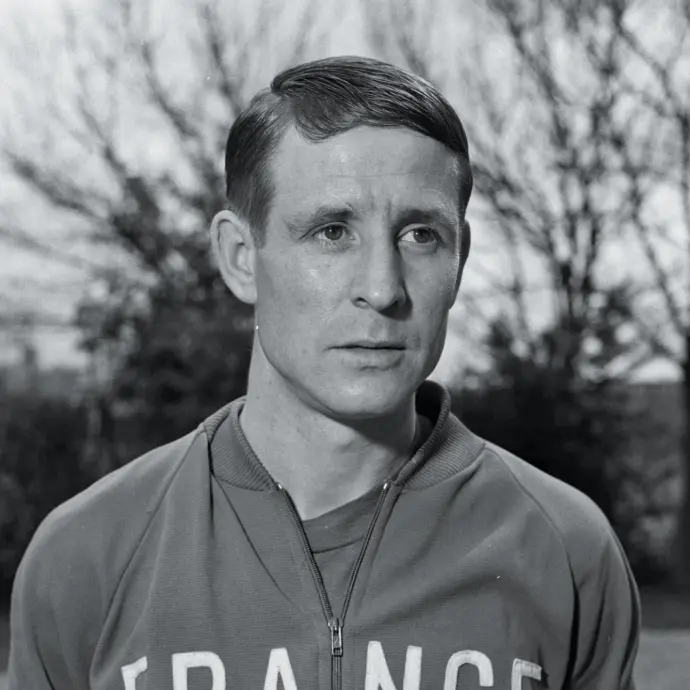
- Age : 24/25 years old
- Club : Real Madrid
- Statistics : 36 games, 10 goals, 11 assists
- Trophies : Finalist Champions League, French League Vice-Champion
- Individual Awards : Champions League TOTY, French League TOTY
In the calendar year 1956, Raymond Kopa—France’s Napoléon du football—was scaling the peak of European stardom, his elegant playmaking style enchanting crowds across France and dazzling observers in the newly created European Cup. Still at Stade de Reims, the diminutive maestro orchestrated one of the most fluid attacking teams of the era, guiding them to the final of the inaugural European Cup, where they fell valiantly to Real Madrid. Kopa’s contribution that year was monumental. In domestic competition, he helped Reims finish second in Ligue 1, narrowly behind Nice, while his performance in the European Cup was electric. Playing as a roaming inside forward, he combined vision, dribbling, and perfectly timed passes to carve open defenses. His interplay with teammates like Piantoni and Vincent laid the foundations for Reims’ jeu champagne—a style as intoxicating as its namesake.
Winner : Alfredo Di Stéfano
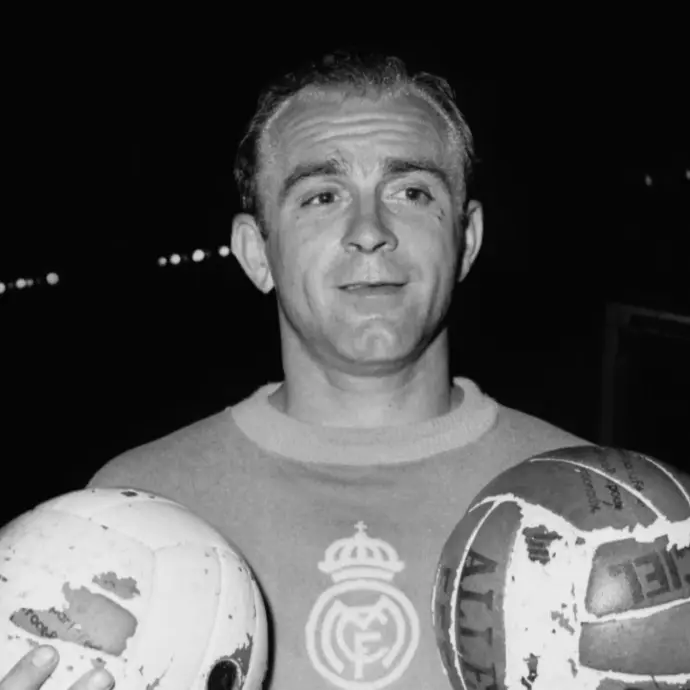
- Age : 29/30 years old
- Club : Real Madrid
- Statistics : 39 games, 39 goals, 8 assists
- Trophies : Champions League, Little World Cup of Clubs
- Individual Awards : Champions League TOTY, Liga TOTY, Liga Golden Shoe (24 goals)
In the calendar year 1956, Alfredo Di Stéfano—“La Saeta Rubia” or The Blond Arrow—blazed across Europe as the prototype of the total footballer, redefining what it meant to lead from the front. At Real Madrid, he was more than a forward—he was the conductor, creator, and destroyer rolled into one. That year, Madrid didn’t clinch the La Liga title (they finished runners-up behind Athletic Club), but Di Stéfano’s impact far outshined that domestic stumble. His most iconic achievement of 1956 came in the inaugural European Cup, where he spearheaded Madrid’s historic triumph. In the final against Stade de Reims, Di Stéfano’s presence shifted the tide of the match. He scored the first Madrid goal and orchestrated attacking waves that eventually led to a legendary 4–3 comeback victory, forever tying his name to the birth of continental dominance. Statistically, he finished the year with 24 La Liga goals, earning the Pichichi (top scorer) title for the second time. But Di Stéfano’s numbers only tell part of the story. His role as the engine of Madrid’s “white ballet” allowed him to roam the pitch freely—tackling, assisting, scoring—acting as midfielder and striker simultaneously. Opposing managers didn't know whether to mark him as a No. 9 or a deep-lying playmaker—he was both, and neither.